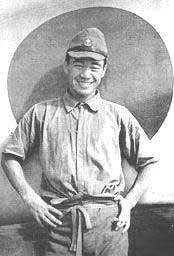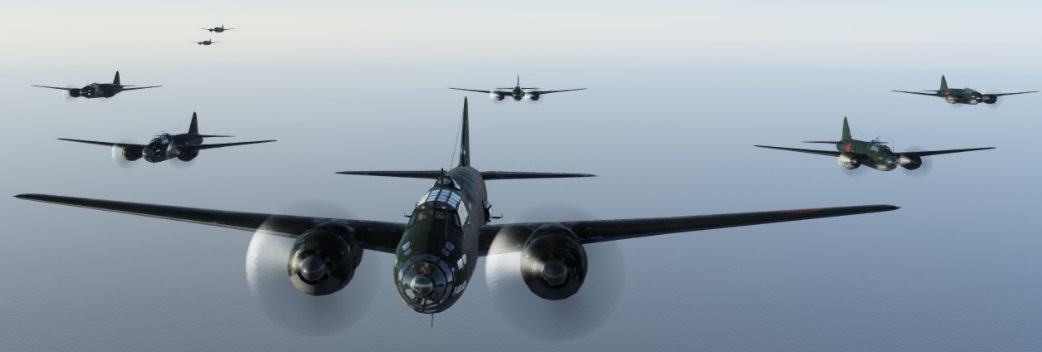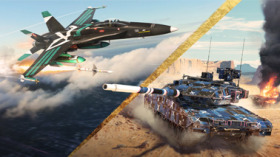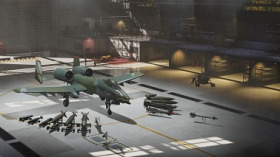
- For PC
- For MAC
- For Linux
- OS: Windows 10 (64 bit)
- Processor: Dual-Core 2.2 GHz
- Memory: 4GB
- Video Card: DirectX 11 level video card: AMD Radeon 77XX / NVIDIA GeForce GTX 660. The minimum supported resolution for the game is 720p.
- Network: Broadband Internet connection
- Hard Drive: 22.1 GB (Minimal client)
- OS: Windows 10/11 (64 bit)
- Processor: Intel Core i5 or Ryzen 5 3600 and better
- Memory: 16 GB and more
- Video Card: DirectX 11 level video card or higher and drivers: Nvidia GeForce 1060 and higher, Radeon RX 570 and higher
- Network: Broadband Internet connection
- Hard Drive: 62.2 GB (Full client)
- OS: Mac OS Big Sur 11.0 or newer
- Processor: Core i5, minimum 2.2GHz (Intel Xeon is not supported)
- Memory: 6 GB
- Video Card: Intel Iris Pro 5200 (Mac), or analog from AMD/Nvidia for Mac. Minimum supported resolution for the game is 720p with Metal support.
- Network: Broadband Internet connection
- Hard Drive: 22.1 GB (Minimal client)
- OS: Mac OS Big Sur 11.0 or newer
- Processor: Core i7 (Intel Xeon is not supported)
- Memory: 8 GB
- Video Card: Radeon Vega II or higher with Metal support.
- Network: Broadband Internet connection
- Hard Drive: 62.2 GB (Full client)
- OS: Most modern 64bit Linux distributions
- Processor: Dual-Core 2.4 GHz
- Memory: 4 GB
- Video Card: NVIDIA 660 with latest proprietary drivers (not older than 6 months) / similar AMD with latest proprietary drivers (not older than 6 months; the minimum supported resolution for the game is 720p) with Vulkan support.
- Network: Broadband Internet connection
- Hard Drive: 22.1 GB (Minimal client)
- OS: Ubuntu 20.04 64bit
- Processor: Intel Core i7
- Memory: 16 GB
- Video Card: NVIDIA 1060 with latest proprietary drivers (not older than 6 months) / similar AMD (Radeon RX 570) with latest proprietary drivers (not older than 6 months) with Vulkan support.
- Network: Broadband Internet connection
- Hard Drive: 62.2 GB (Full client)
30% special discount for all "Zero" planes
x5 special experience bonus for the first victory
from 6 pm gmt august 25th to 6 pm gmt August 26th
 |
On a dark day in 1931, a solitary steam train came to a halt at Saga City Railway station, Japan. An angry, resentful teenaged boy, still bearing the bruises of recent fights, was one of the passengers to disembark. Having failed at his studies and brought shame upon himself with his fighting, Saburo Sakai had been sent back home in disgrace. As he paused to summon up the strength to complete his journey home, his eyes fell on a poster at the railway station. The colourful advertisement was calling for recruits for the Imperial Japanese Navy.
One of seven children, Saburo Sakai was born near Saga on August 26th 1916. His family was descended from a long line of samurai, but following the abolition of the caste system the Sakai family was forced to adopt farming as a source of income. After his father died when Saburo was only 11, he was raised by his mother who clung fiercely to family tradition. A gifted academic, Sakai was consistently the top pupil at school – this was recognized by a wealthy uncle who paid for his schooling and moved him to Tokyo. However, after moving to the big city in 1929 Sakai now found that the competition was much stronger and his academic results were now only mediocre at best. Disillusioned, he became a troubled and violent youth. After two years his uncle sent him back to mother’s farm in disgrace. Keen to atone for this squandered opportunity, Sakai enlisted in the navy as a Seaman Recruit in May 1933, at the age of 16. He adapted well to the harsh training and the quarrelsome, arrogant teenager was transformed into a humble and hard working young man. Sakai was assigned as an apprentice seaman to battleship Kirishima where, spending every spare moment studying, he successfully passed selection for the Navy Gunners School in 1935. After promotion to Seaman he was assigned to battleship Haruna. Onboard Haruna, promoted to Petty Officer, Third Class.
 Then, in 1937, Sakai’s career would take its greatest turn so far. Out of 1500 applicants, Sakai was one of 70 selected for flight training as an NCO. Of the 70 who commenced pilot training, only 25 graduated with Sakai being awarded the Emperor’s Silver Watch as top student pilot. After graduating, he was sent to Northern Kyushu where he learned carrier landings – a skill he would never use operationally. In Spring 1938, Sakai was sent to Kiukiang to take part in the second Sino-Japanese War, flying the Mitsubishi A5M fighter.
Then, in 1937, Sakai’s career would take its greatest turn so far. Out of 1500 applicants, Sakai was one of 70 selected for flight training as an NCO. Of the 70 who commenced pilot training, only 25 graduated with Sakai being awarded the Emperor’s Silver Watch as top student pilot. After graduating, he was sent to Northern Kyushu where he learned carrier landings – a skill he would never use operationally. In Spring 1938, Sakai was sent to Kiukiang to take part in the second Sino-Japanese War, flying the Mitsubishi A5M fighter.
After several days of ground support sorties, Sakai was selected to take part in an offensive fighter sweep – he first saw action in May when, as part of a fifteen fighter formation, he was engaged by Chinese fighters over Hankow. Sakai incurred his CO’s wrath when, even though defended by several of his squadron mates, he expended all of his ammunition to down a single, outnumbered enemy fighter. Another landmark sortie occurred when Sakai’s airfield was bombed by twelve Chinese aircraft on October 3rd, 1939. Already wounded, Sakai sprinted through burning aircraft to find an undamaged fighter before taking to the skies to chase the fleeing bombers. After a 20 minute pursuit, he managed to damage one of the bombers but was forced to turn for home with low fuel. After landing he collapsed on the runway from his wounds. He returned to Japan to recover and could finally visit his home village as a hero. Sakai transferred to Formosa and began conversion to the new Mitsubishi A6M Zero before returning to China. It was not until May 1941, when rotated to Hankow, that Sakai experienced his combat debut in a Zero, and it was not until August that he scored his first Zero kill. In September his unit was ordered back to Formosa as Japan geared up for its war with the United States. Hours after the attack on Pearl Harbour on December 7th 1941, Sakai took part in the raid on Clark Field in the Philippines, claiming a P40 destroyed. Three days later he shot down a B-17, flown by DSC recipient Captain Colin Kelly – the first B-17 to be lost by the US in combat – although this was not confirmed until after the war. By the year’s end, Sakai was stationed near Borneo where his unit was tasked with providing cover to local bases and convoys. In February 1942 Sakai’s Wing was operating from Balikpapan airfield, mainly on CAP duty. On the 19th the twenty three Zeros of his wing encountered some fifty Dutch fighters in an epic dogfight near Surabaya. Sakai shot down three P36 fighters; his wing lost three Zeros in exchange for claiming forty enemy aircraft destroyed, although Sakai later wrote that he believed this figure to be slightly exaggerated. Following a period of inactivity at Bali island, Sakai’s Wing moved 2500 miles east to Rabaul. After re-basing to New Guinea, the ‘Lae Wing’ now began an intensive period of operations against allies in the vicinity of Port Moresby. On April 11th, Sakai destroyed two P39s in a single firing pass whilst his wingman, Hiroyoshi Nishizawa, scored his first kill in a Zero. With Toshio Ota, the three became known as ‘The Clean-Up Trio’ and rapidly established themselves as the Japanese Navy’s top fighter aces, with Sakai taking the lead. Sakai’s skill became legendary amongst the Lae Wing; on May 10th he shot down a P39, expending only four cannon shells.
However, Sakai’s previous rebellious streak began to re-emerge. On one occasion he ordered his pilots to trade with local natives for cigars, even though this was strictly prohibited due to the risk of narcotic ingredients. Despite this, he openly smoked these cigars in front of his CO. He also ordered his wingman, Toshiaki Honda, to steal food from the Officers’ Mess. When Honda was caught and subsequently beaten by an officer, Sakai drew his pistol and fired a warning shot at the officer to defend his wingman. His rebellious streak culminated when, along with Nishizawa and Ota, the Clean-Up Trio performed low level formation aerobatics over an enemy airfield to prove that they owned the skies, even in allied airspace. All three were disciplined when an enemy aircraft dropped a note at Lae, promising the three Zero pilots a proper ‘welcome’ if they ever tried it again.
The fighting continued through to August, with the Lae Wing scoring the most victories of any Japanese fighter wing in the entire war; on June 16th Sakai shot down four enemy aircraft in a single day and was recommended for commissioning as an officer by his CO. The request for Japan’s leading air ace was denied, as Command would not acknowledge Japan having a ‘living hero.’
On August 3rd Sakai and most of the wing returned to Rabaul. Five days later, after reports of US landings at Guadalcanal, Sakai led his flight in what his CO briefed would be the longest fighter mission in history: an 1100 mile round flight. US Navy Wildcats attacked the 27 Mitsubishi G4M bombers he was escorting – he shot down a Wildcat but was jumped by a Dauntless dive bomber, which Sakai also dispatched as his 60th victory. However, mistaking an enemy bomber formation for fighters, Sakai attacked from behind and was shot in the head by return fire. Paralyzed down the left side of his body and blind in one eye, it was only the tears of pain washing the blood out of his good eye that allowed him to fly an incredible 4 ½ hour journey back to Rabaul. He collapsed as soon as he staggered out of the cockpit, but upon regaining consciousness he refused any medical treatment until he had reported his actions to the Wing’s Command Post.
After treatment at Rabaul, further surgery in Japan and a 30 minute operation on his eyes without anesthetic, surgeons were able to restore movement in his limbs, but only very limited sight in his damaged eye. Whilst spending 6 months convalescence leave in Japan he refused the hand in marriage of his long term sweetheart for fear of not deserving her, now that he was half blind and unable to fly fighters again. In November 1942 he was promoted to Warrant Officer, and shortly afterwards received a visit from Nishizawa who told him that only 9 of 80 Zero pilots in their Wing had survived Guadalcanal.
In January 1943 he returned to flying duties with the Tainan Wing; when the unit deployed to Rabaul, surgeons prohibited Sakai from returning to the front line. He was sent to Omura as an instructor where, over the next months, his repeated requests to return to the front line were denied. Finally, in April 1944, he was transferred to the Yokosuka Wing. In June the Wing deployed to Iwo Jima – desperate for experienced pilots by this stage, nobody stopped Sakai from returning to operations. After four aborted attempts to weather fierce storms, the thirty replacement Zeros finally arrived at Iwo Jima to find their airfield’s runway packed with ninety aircraft. The Wing landed on a mountainside path and soldiers watched in disbelief as the thirty Zeros taxied past them in column, navigating the mountain path in fog.
On June 24th Sakai finally returned to combat, shooting down a Hellcat but finding the new breed of fighter incredibly difficult to combat compared to the P39s and P40s he remembered. In three encounters with US Hellcats, seventy one out of the Wing’s eighty Zeros were destroyed. The survivors were ordered to fly, effectively to their deaths, in an escort mission protecting bombers who were targeting the US Fleet. The strike was intercepted en route and Sakai disobeyed his orders by breaking off the attack and leading his ‘vic’ of three Zeros back to Iwo Jima. After the remaining aircraft were destroyed on the ground, the few surviving pilots were issued rifles in preparation for the US landings. However, the US Fleet had been diverted to the Philippines and the survivors returned to Japan.

Finally commissioned as an officer, Sakai was promoted to Ensign and resumed his duties as an instructor, but now augmented by additional tasking as a test pilot. In January 1945 he was selected along with other veterans to form the Matsuyama Wing, now equipped with the new Kawanishi N1K Shinden fighter. They entered combat in March, a month after Sakai married, but it was too little too late. In August 1945 Sakai and his comrades were told of Japan’s impending surrender after atom bombs were dropped on Hiroshima and Nagasaki. Against orders, Sakai and nine others took to the skies in their aging Zeros for one last flight, shooting down a B29 Superfortress.
Stepping out of the cockpit after his last flight, Sakai avowed to never again kill another creature. He started a printing business after the war and also became a Buddhist lay acolyte, as well as a keen golfer. In 2000, the 84 year old Samurai passed away after suffering a heart attack whilst dining with US Naval officers near Tokyo.
 |
About the author:Mark Barber, War Thunder Historical ConsultantMark Barber is a pilot in the British Royal Navy's Fleet Air Arm. His first book was published by Osprey Publishing in 2008; subsequently, he has written several more titles for Osprey and has also published articles for several magazines, including the UK's top selling aviation magazine 'FlyPast'. His main areas of interest are British Naval Aviation in the First and Second World Wars and RAF Fighter Command in the Second World War. He currently works with Gaijin as a Historical Consultant, helping to run the Historical Section of the War Thunder forums and heading up the Ace of the Month series. |



